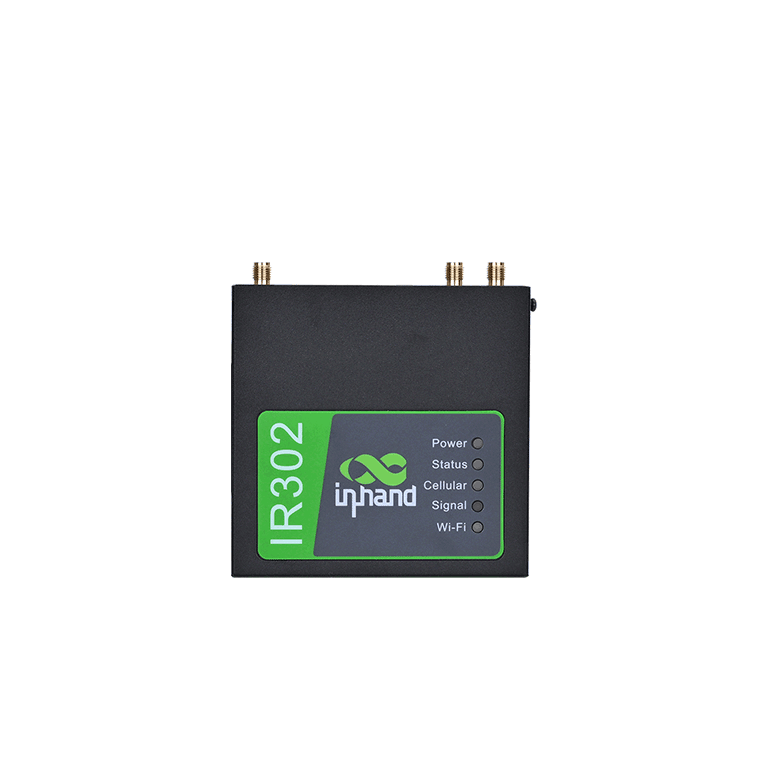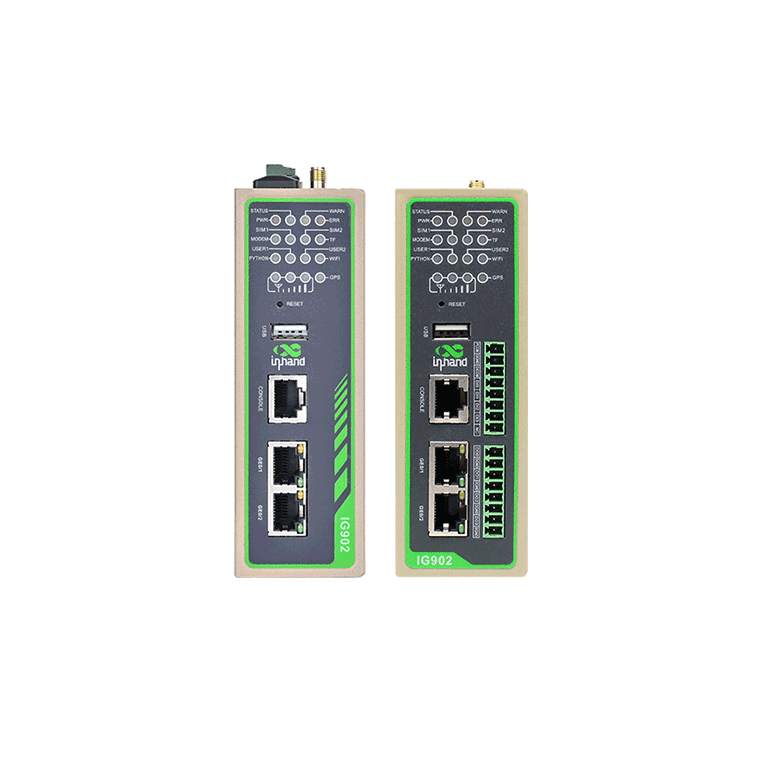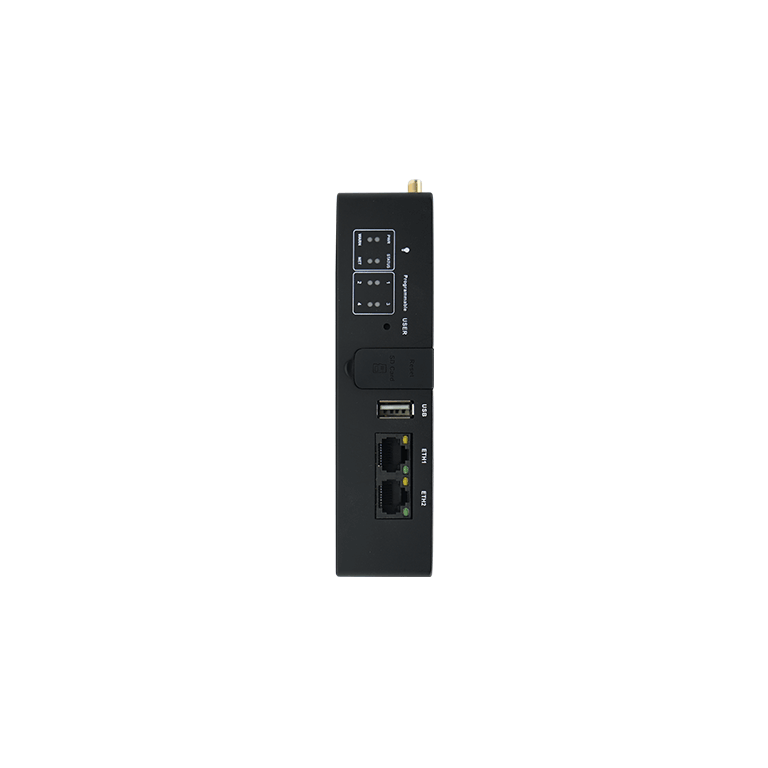AB NIS 2 Direktifi: InHand Networks Uyumlu ve Güvenli Kalmanıza Nasıl Yardımcı Olur?
InHand Networks olarak, NIS 2'yi yalnızca bir düzenleme olarak değil, aynı zamanda daha güçlü bir dijital Avrupa'ya giden bir yol haritası olarak görüyoruz. Tasarım açısından güvenli ürün portföyümüz, dünya çapında tanınan sertifikalarımız ve şeffaf Ürün Güvenliği Danışmanlık programımızla, müşterilerimizin siber güvenliğin sonradan akla gelen bir şey değil, temel bir beklenti olduğu bir geleceğe hazırlanmalarına yardımcı oluyoruz.
NIS 2 Giriş
NIS 2 Direktifi, üye devletler genelinde yüksek düzeyde ortak dayanıklılık sağlamak amacıyla gönüllü yönergelerin yerini zorunlu, risk temelli bir çerçevenin almasıyla AB siber güvenliğinde bir paradigma değişikliğini temsil ediyor.
Yönerge, kuruluşları temel veya önemli kuruluşlar olarak sınıflandırarak, sektör kritikliğine göre özelleştirilmiş, sıkı siber güvenlik risk yönetimi ve raporlama gerekliliklerini zorunlu kılmaktadır. Bu sayede, enerji ve sağlık hizmetlerinden dijital altyapı ve kamu yönetimine kadar hayati önem taşıyan hizmetlerin güvenli ve çalışır durumda kalması sağlanarak toplumsal ve ekonomik aksaklıklar en aza indirilmektedir.
İşletmeler açısından Yönerge, yalnızca bir uyumluluk zorunluluğundan daha fazlasıdır; dayanıklılığı artırmak, riski azaltmak ve daha güvenilir tedarik zincirleri oluşturmak için bir fırsattır.
Kimler Uymalıdır: Temel ve Önemli Kuruluşlar
NIS 2 Direktifi, kapsamını daha geniş bir sektör ve kuruluş kümesine genişleterek, bunları büyüklüklerine, sektörlerine ve kritikliklerine göre Temel ve Önemli kuruluşlar olarak sınıflandırıyor.
Her iki grubun da aynı temel siber güvenlik gerekliliklerini karşılaması gerekiyor; ancak farklı düzeylerde denetim ve yaptırıma tabi tutuluyorlar.
Kurallar genellikle AB tavsiyesinde tanımlandığı gibi orta ve büyük ölçekli işletmeler için geçerlidir (tipik olarak >50 çalışan ve >10 milyon € ciro/10 milyon € bilanço toplamı), ancak belirli kuruluşlar "büyüklüklerine bakılmaksızın" dahil edilmiştir (örneğin, üst düzey alan adı kayıtları, DNS hizmet sağlayıcıları, kamu elektronik iletişim ağları sağlayıcıları).
| Kategori | Kuruluşun Boyutu | Sınıflandırma |
|---|---|---|
| Her Zaman Gerekli (boyutundan bağımsız) Güven hizmeti sağlayıcıları, DNS operatörleri, TLD kayıtları, kamu elektronik iletişim ağları/hizmetleri, CER tarafından belirlenmiş kritik kuruluşlar | Herhangi bir boyut | Gerekli |
| Ek I (Yüksek Kritikliğe Sahip Sektörler) Enerji, Ulaşım, Bankacılık, Finansal Altyapı, Sağlık, İçme Suyu, Dijital Altyapı, Kamu Yönetimi, Uzay | Büyük | Gerekli |
| Ek II (Diğer Kritik Sektörler) Posta ve Kurye, Atık Yönetimi, Kimyasallar, Gıda, Üretim (örneğin tıbbi cihazlar), Dijital Sağlayıcılar, Araştırma | Orta veya Büyük | Önemli |
Açıklaması boyut kriterleri:
- Büyük : ≥ 250 çalışan VEYA (Ciro > 50 Milyon € Ve Bilanço > 43 Milyon €)
- Orta 50–249 çalışan VE (Ciro ≤ 50 Milyon € Ve Bilanço ≤ 43 Milyon €)
Kuruluşlar için NIS 2 Uyumluluk Mücadelesi
NIS 2 Direktifi, AB genelinde siber güvenlik yükümlülüklerinin kapsamını, ölçeğini ve sıkılığını kökten genişleterek önemli bir uyumluluk sorunu ortaya koymaktadır. Kuruluşlar artık çok yönlü bir zorlukla karşı karşıyadır:
| Meydan Okuma Kategorisi | Kuruluşların Yapması Gerekenler |
|---|---|
| 1. Kategorinizi Bilin | • Büyüklüğünüzden bağımsız olarak her zaman kapsam dahilinde olan kuruluşlara dahil olup olmadığınızı onaylayın (Madde 2(2)–(4)). Evet ise, Temel Kuruluşsunuz. • Aksi takdirde, Temel veya Önemli (Madde 3) olup olmadığınızı görmek için Ek I/II'yi kontrol edin. • İlgili denetim rejimine hazırlık yapın (Madde 31–33). |
| 2. Liderlik Sorumluluğu | • Üst yönetimin siber güvenlik risk yönetimini onaylamasını ve denetlemesini sağlayın (Madde 20(1)). • Yönetim ve personele düzenli eğitim sağlayın (Madde 20(2)). • Not: Üst yönetim şahsen sorumlu tutulabilir; temel kuruluşlar geçici yasaklarla karşı karşıya kalabilir (Madde 32(5)). |
| 3. Güvenlik Önlemlerini Uygulayın | • Uygun ve orantılı tedbirleri alın (Madde 21(1)). • Tedbirler şunları kapsamalıdır: risk analizi, olay yönetimi, iş sürekliliği, tedarik zinciri güvenliği, güvenlik açığı yönetimi, güvenli tasarım, kriptografi, erişim kontrolü, güvenli iletişim, çok faktörlü kimlik doğrulama (Madde 21(2)). |
| 4. Olay Bildirim Zaman Çizelgelerine Uyun | Büyük olayları üç adımda bildirin: • 24 saat içinde: Erken uyarı (Madde 23(2)). • 72 saat içinde: Değerlendirmeyle birlikte olay bildirimi (Madde 23(4)). • 1 ay içinde: Kök neden ve hafifletme önlemlerini içeren nihai rapor (Madde 23(6)). |
| 5. Tedarik Zinciri Güvenliğini Yönetin | • Tedarikçi ve hizmet sağlayıcı ilişkilerindeki riskleri ele alın (Madde 21(2)(d)). • Üçüncü taraf siber güvenlik uygulamalarını değerlendirin ve izleyin. |
| 6. Denetim ve Uygulamaya hazır olun | • Temel kuruluşlar: proaktif denetimler, incelemeler ve güvenlik taramaları (Maddeler 31–32). • Önemli kuruluşlar: Olaylar veya uyumsuzluk kanıtları sonrasında reaktif kontroller (Madde 33). • Uymamaya ilişkin para cezaları: küresel ciroda 10 milyon avroya veya 2%'ye kadar (temel) / 7 milyon avroya veya 1,4%'ye kadar (önemli) (Madde 34). |
NIS 2'nin Temel Gereksinimleri
1. Liderlik Sorumluluğu (Madde 20, Madde 32(5))
- Siber güvenlik artık bir üst yönetim sorumluluğu — Yöneticiler risk yönetimi önlemlerini onaylamalı ve denetlemelidir.
- Hem liderlik hem de çalışanlar şunları almalıdır: düzenli siber güvenlik eğitimi.
- Dikkat: Yönetim, kişisel sorumlulukve temel varlıklar risk altında geçici yasaklar Ciddi başarısızlıklar durumunda liderler için.
2. Kapsamlı Siber Güvenlik Önlemleri (Madde 21)
Kuruluşlar, tam bir diziyi benimsemelidir teknik, operasyonel ve organizasyonel güvenlik önlemleri.
Bunlar şunları içerir:
- Risk analizi ve bilgi sistemi güvenlik politikaları.
- Olay yönetimi.
- Yedekleme yönetimi, felaket kurtarma ve kriz yönetimi de dahil olmak üzere iş sürekliliği.
- Tedarikçi ilişkilerine ilişkin güvenlikle ilgili hususlar da dahil olmak üzere tedarik zinciri güvenliği.
- Ağ ve bilgi sistemlerinin edinimi, geliştirilmesi ve bakımında güvenlik, güvenlik açığı yönetimi ve ifşası dahil.
- Siber güvenlik önlemlerinin etkinliğini değerlendirmeye yönelik politikalar ve prosedürler.
- Temel siber hijyen uygulamaları ve siber güvenlik eğitimi.
- Kriptografi ve uygun olduğu durumlarda şifrelemeye ilişkin politikalar ve prosedürler.
- İnsan kaynakları güvenliği, varlık yönetimi ve erişim kontrolü.
- Çok faktörlü (veya sürekli) kimlik doğrulamanın, güvenli ses/görüntülü/metin iletişiminin ve güvenli acil durum iletişim sistemlerinin kullanılması.
(Bunu, kuruluşunuz ve ekosisteminiz genelinde "derinlemesine savunma" oluşturmak olarak düşünün.)
3. Olay Bildirimi (Madde 23)
Kuruluşlar bir üç adımlı raporlama süreci:
- 24 saat içinde: Bir tane gönder erken uyarı Bir olayın kötü niyetli veya sınır ötesi olması ihtimali varsa CSIRT/yetkililere bildirilmelidir.
- 72 saat içinde: Bir tane sağlayın detaylı olay bildirimi ilk değerlendirme ile.
- 1 ay içinde: Bir teslim et son rapor Kök neden, etki ve azaltma önlemleriyle.
(Zaman, olayı fark ettiğiniz anda başlar; olayı analiz etmeyi bitirdiğinizde değil.)
4. Denetim ve Uygulama (Maddeler 31–36)
- Temel Varlıklar
- Nezaret: Proaktif → denetimler, incelemeler, teknik taramalar, güvenlik değerlendirmeleri (md. 32).
- Cezalar (Md. 34): kadar 10 milyon avro veya 2% küresel ciro (hangisi yüksekse).
- Ek Tedbirler (Madde 32(4)):
- Yöneticilerin (örneğin CEO, yasal temsilci) yönetimsel işlevlerini yerine getirmesinin geçici olarak yasaklanması.
- Yetkilendirme veya sertifikasyonların askıya alınması.
- Bağlayıcı uyum emirleri.
- Kamuoyunda isimlendirme (isimlendirme ve utandırma).
- Yöneticilerin (örneğin CEO, yasal temsilci) yönetimsel işlevlerini yerine getirmesinin geçici olarak yasaklanması.
- Nezaret: Proaktif → denetimler, incelemeler, teknik taramalar, güvenlik değerlendirmeleri (md. 32).
- Önemli Varlıklar
- Nezaret: Reaktif (sonradan) → olaylar veya uyumsuzluğa ilişkin deliller tarafından tetiklenen (Madde 33).
- Cezalar (Md. 34): kadar 7 milyon avro veya 1,4% küresel ciro (hangisi yüksekse).
- Düzeltici Önlemler: Bağlayıcı talimatlar ve emirler.
- Nezaret: Reaktif (sonradan) → olaylar veya uyumsuzluğa ilişkin deliller tarafından tetiklenen (Madde 33).
InHand Networks NIS 2 Uyumluluğunu Nasıl Destekliyor?
NIS 2 Direktifi, yönetişim, risk yönetimi ve dayanıklılık konusunda yüksek beklentiler belirlemektedir. InHand Networks olarak, kuruluşların yalnızca uyumluluk gerekliliklerini karşılamalarına değil, aynı zamanda kalıcı siber dayanıklılık oluşturmalarına da yardımcı oluyoruz. tasarıma göre güvenli yaklaşım, uluslararası sertifikalar, Ve şeffaf ürün güvenliği uygulamaları NIS 2 kapsamındaki Temel ve Önemli kuruluşlar için bizi güvenilir bir ortak haline getirin.
1. Yönetişim ve Hesap Verebilirlik (Madde 20)
- ISO/IEC 27001 sertifikası Sistematik bilgi güvenliği yönetimine olan bağlılığımızı göstermektedir.
2. Siber Güvenlik Risk Yönetimi Tedbirleri (Madde 21)
- IEC 62443-4-1 sertifikalı güvenli geliştirme yaşam döngüsü: Tüm InHand ürünlerinin güvenliği ön planda tutarak tasarlanmasını, test edilmesini ve bakımının yapılmasını sağlar.
- IEC 62443-4-2 sertifikalı endüstriyel yönlendiriciler ve IoT kenar ağ geçitleri: Enerji, ulaşım ve sağlık gibi kritik altyapılarda güvenli bağlantı için güvenilir yapı taşları sağlamak.
- EN 18031 sertifikası: Cihazlarımızın siber saldırılara karşı dayanıklılık testlerini güçlendiriyor.
Bu sertifikalar birlikte, NIS 2 tarafından zorunlu kılınan teknik ve organizasyonel önlemleri doğrudan desteklemektedir.
3. Olay Yönetimi ve Güvenlik Açığı Açıklaması (Madde 21 ve 23)
- InHand Networks, özel bir Ürün Güvenliği Olay Müdahale Ekibi (PSIRT) ve bir Koordineli Güvenlik Açığı Açıklama (CVD) süreci.
- Bizim aracılığımızla Ürün Güvenlik Uyarıları (PSA) [[link] sayesinde müşteriler zamanında güncellemeler, yamalar ve azaltma rehberliği alırlar; bu da onların NIS 2 olay müdahalesi ve güvenlik açığı yönetimi yükümlülüklerine uymalarına yardımcı olur.
4. Tedarik Zinciri Güvenliği (Madde 21(2)(d))
- Seçerek NIS 2 uyumlu, uluslararası sertifikalı ürünler, kuruluşlar kendi tedarik zinciri güvenlik duruşlarını güçlendirebilirler.
- Üçüncü taraf bağımlılıkları yoluyla yayılan riskleri azaltan titiz geliştirme ve test sürecimiz, NIS 2 kapsamında kritik bir husustur.
5. Denetim ve Uygulama Hazırlığı (Maddeler 31–36)
- InHand çözümlerini kullanan müşteriler şu avantajlardan yararlanır: doğrulanabilir, standartlara dayalı güvenlik kanıtı, denetim ve incelemeleri desteklemek.
- Uyumluluk temelimiz (ISO 27001, IEC 62443, EN 18031), düzenleyicilere uygunluğu göstermek için gereken belgeleri sağlar.
InHand Güvenlik Mükemmelliğinin Dört Temel İlkesi
NIS 2 Yönergesinin katı gerekliliklerini karşılamak, izole teknik düzeltmelerden daha fazlasını gerektirir; bütünsel ve sürdürülebilir güvenlik çerçevesiİşte bu yüzden InHand Networks, Güvenlik Mükemmelliğinin Dört Temel İlkesiYönetişimi, ürün bütünlüğünü, sertifikasyonları ve operasyonel dayanıklılığı tek bir yaklaşımda birleştiren kapsamlı bir model.
Küresel olarak tanınan standartlar üzerine inşa edilmiştir, örneğin: ISO/IEC 27001 Ve IEC 62443Dört Sütun, güvenli geliştirme uygulamalarına, sağlam ürün mühendisliğine ve şeffaf güvenlik açığı yönetimine yıllardır yapılan yatırımı yansıtır. Güvenliğin sadece bir özellik değil, bir temel Ürün yaşam döngüsünün her aşamasında.
NIS 2 uyumluluğuna hazırlanan kuruluşlar için Dört Sütun, Yönergenin yasal ve düzenleyici gerekliliklerini şu şekilde tercüme eder: pratik, doğrulanabilir önlemlerHer bir sütun, liderlik sorumluluğundan güvenli ürün geliştirmeye, olay yönetimi ve tedarik zinciri güvencesine kadar temel NIS 2 yükümlülüklerine doğrudan eşlenir.
Dört Sütun birlikte, uyumluluk ve dayanıklılık arasında köprü: Kuruluşların düzenleyicilere uyum sağlamalarına yardımcı olurken, aynı zamanda gelişen siber tehdit ortamıyla başa çıkmak için daha güçlü ve daha güvenilir sistemler kurmalarına yardımcı oluyoruz.
1. Güvenli Geliştirme
- Üzerine inşa edilmiş IEC 62443-4-1 (Uygulamalı Düzey) güvenli geliştirme yaşam döngüsü metodolojisi.
- Tanımlanmış, tutarlı bir şekilde uygulanmış ve projeler arasında tekrarlanmış.
- Gömülür Tasarımda Güvenli, Varsayılan Olarak Güvenli ve Derinlemesine Savunma Mühendisliğin her aşamasına.
- Sürekli tehdit modellemesi, kod incelemeleri ve sızma testi Sürümden önce güvenlik açıklarını en aza indirmek için.
2. Güvenli Ürünler
- IEC 62443-4-2 Sertifikalı Kritik OT/IT ortamları için endüstriyel yönlendiriciler ve IoT uç ağ geçitleri.
- EN 18031 Sertifikalı sağlamlık açısından—gelişmiş siber saldırılara karşı test edilmiştir.
- Güvenilir performans enerji, ulaşım, sağlık, imalat ve dijital altyapı sektörleri.
3. Güvenli Sertifikalar
Dünya çapında tanınan sertifikalar sağlayan uyumluluk güvencesi :
- ISO 27001 – Bilgi Güvenliği Yönetim Sistemi (BGYS).
- IEC 62443-4-1 (Uygulamalı Düzey) – Güvenli geliştirme yaşam döngüsü olgunluğu.
- IEC 62443-4-2 – Endüstriyel ürün siber güvenliği.
- EN 18031 – Radyo Ekipmanları için Ortak Güvenlik Gereksinimleri.
Bu sertifikalar bir arada, şunu kanıtlıyor: InHand'in bilgi ve ürün güvenliğinde en yüksek uluslararası standartlara olan bağlılığı.
Ayrıca müşterilerimize ve tedarik ekiplerine çözümlerimizin sıkı güvenlik ve kalite kriterlerini karşıladığına dair güven verirler.
4. Güvenli İşlemler
- Özel PSIRT (Ürün Güvenliği Olay Müdahale Ekibi) zafiyet yönetimi için.
- Kurulmuş Koordineli Güvenlik Açığı Açıklaması (CVD) işlem.
- Şeffaf Ürün Güvenlik Tavsiyeleri (PSA) portalı: Kamu spotlarını görüntüle.
- ISMS uygulamada: ISO 27001'e dayalı sürekli izleme, risk değerlendirmeleri ve politika uygulama.
- Devam ediyor yaşam döngüsü desteği ve güvenlik bakımı Müşterileri gelişen tehditlerin önünde tutmak.
Sonuç: Uyumluluğu Siber Dayanıklılığa Dönüştürmek
NIS 2 Direktifi, siber güvenlik yönetişiminde çıtayı yükselterek, Avrupa genelindeki kuruluşların yalnızca uyumluluğu değil, aynı zamanda gelişen tehditlere karşı koyma ve bunlardan kurtulma becerisini de göstermelerini zorunlu kılıyor. Temel ve Önemli kuruluşlar, artık siber güvenliğin her düzeyde - liderlik sorumluluğundan ürün bütünlüğüne, tedarik zinciri güvenliğinden olaylara hazırlığa kadar - yerleşik olduğunu kanıtlamak zorunda.
InHand Networks'te uyumlu ürünlerden daha fazlasını sunuyoruz; dayanıklılık için güvenli bir temelUluslararası alanda tanınan sertifikalarımız, şeffaf bir güvenlik açığı yönetim sürecimiz ve kritik sektörlerde güven duyulan güvenli tasarım portföyümüzle, kuruluşların NIS 2 ortamında güvenle gezinmesine yardımcı oluyoruz.
InHand Networks ile ortaklık kurarak uyumluluktan daha fazlasını elde edersiniz:
- Risk azaltma — güvenli tasarım mühendisliği ve uluslararası sertifikalı ürünler sayesinde.
- Düzenleyici güveni — NIS 2 yükümlülüklerine doğrudan eşlenen, doğrulanabilir, standartlara dayalı kanıtlarla.
- İş sürekliliği — modelimize entegre edilmiş sağlam operasyonlar, yaşam döngüsü desteği ve olay hazırlığı ile.
Uyumluluktan dayanıklılığa kadar InHand Networks, NIS 2 hazırlığı için güvenilir ortağınızdır.
IEC 62443 Sertifikalı Ürünler


